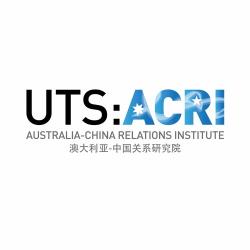China has become an important economic partner for both Australia and Canada. How do the Australian and Canadian publics view China? What are the differences and similarities in government policies and attitudes towards China? What role does the US play in the formulation of China policy in both countries? How has Canada approached the TPP since US President Donald Trump’s withdrawal, and why didn’t Canadian Prime Minister Justin Trudeau turn up to the TPP leadership meeting on the sidelines of APEC? Gordon Houlden, Director of the China Institute and Professor of Political Science at the University of Alberta, joins Bob Carr, Director of the Australia-China Relations Institute (ACRI) at the University of Technology Sydney to discuss what Australia and Canada can learn from each other as they develop their respective relationships with China.
Guest: Gordon Houlden, Professor of Political Science and Director of the China Institute, University of Alberta, Canada
Host: Bob Carr, Director, Australia-China Relations Institute (ACRI), University of Technology Sydney
China has become an important economic partner for both Australia and Canada. How do the Australian and Canadian publics view China? What are the differences and similarities in government policies and attitudes towards China? What role does the US play in the formulation of China policy in both countries? How has Canada approached the Trans-Pacific Partnership (TPP) since the US’ formal withdrawal under President Donald Trump, and why didn’t Canadian Prime Minister Justin Trudeau turn up to the TPP leadership meeting on the sidelines of APEC?
Gordon Houlden joins Bob Carr to discuss what Australia and Canada can learn from each other as they develop their respective relationships with China.
In contrast to the Australian government’s recent rhetoric on China, under the current Canadian government, attitudes towards China have become more positive.
The US-China relationship is important to Canada, as it is to Australia. Canada’s ‘greatest fear in the 21st century’ is to be in a position of being forced to take sides between the two powers. Canada and Australia should be cautious of ‘anticipatory fear’ of the United States’ response to their China policies, which can be constraining.
The TPP presents a dilemma for Canada. Canada had decided to join the TPP during the Obama presidency, as the agreement would grant Asian markets privileged access to the US market, and Canada wanted to remain competitive. However, since US withdrawal from the agreement in January, Canada has recalculated; it is concerned that the TPP could give President Trump more ammunition to impose higher tariffs on automobiles and other imports from Canada under a renegotiated North American Trade Agreement (NAFTA).
While some commentators and government officials have suggested that the China-Australia Free Trade Agreement (ChAFTA) enacted in 2015 should serve as a model for a China-Canada free trade agreement, such an agreement would need to address Canada’s unique situation and requirements. Canada has expressed a desire to negotiate a competitive agreement along the lines of what could result from pending improvements to ChAFTA.
Theme music by Sam J Mitchell.


